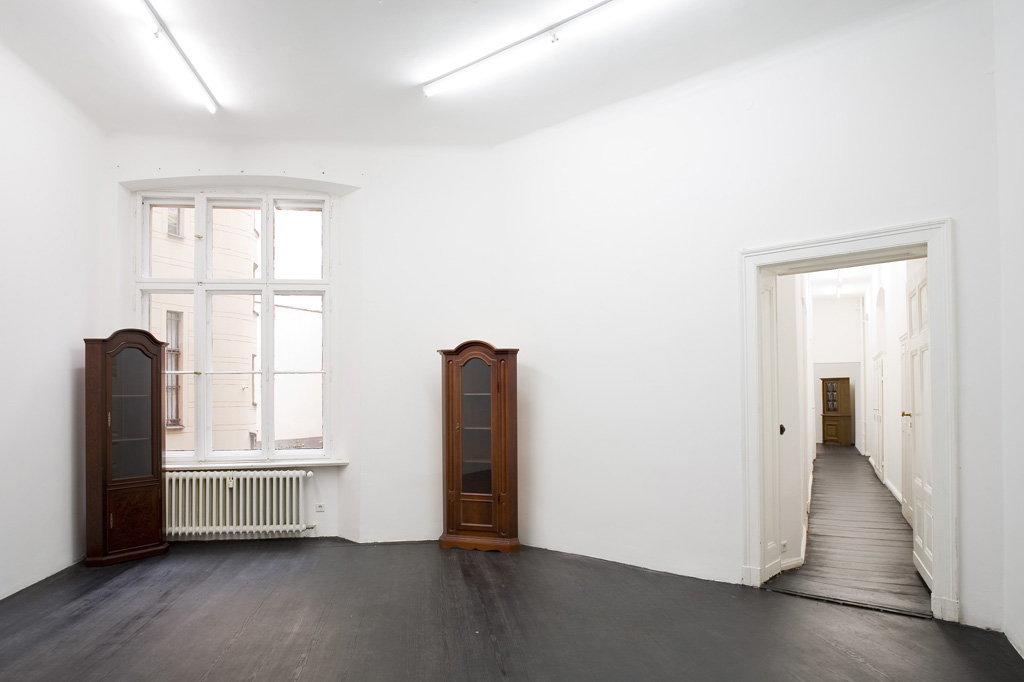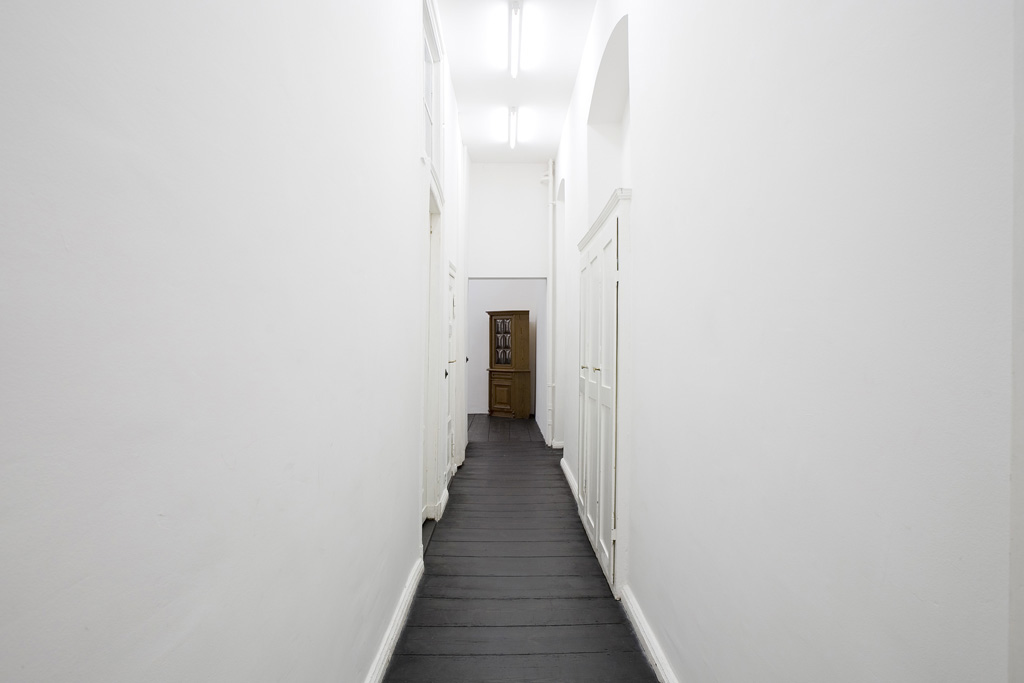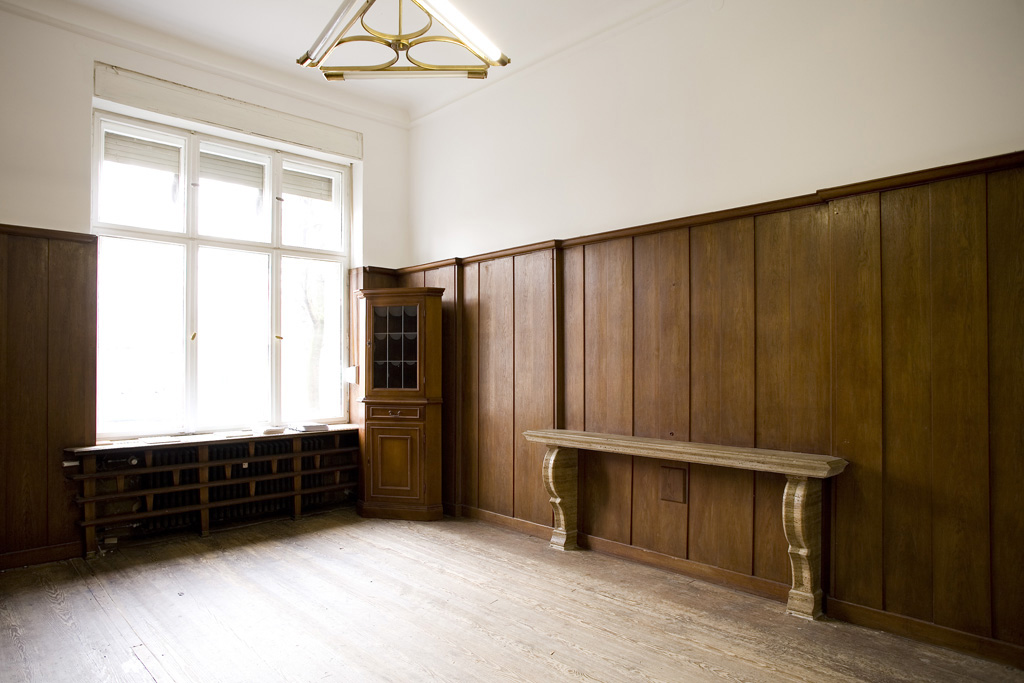
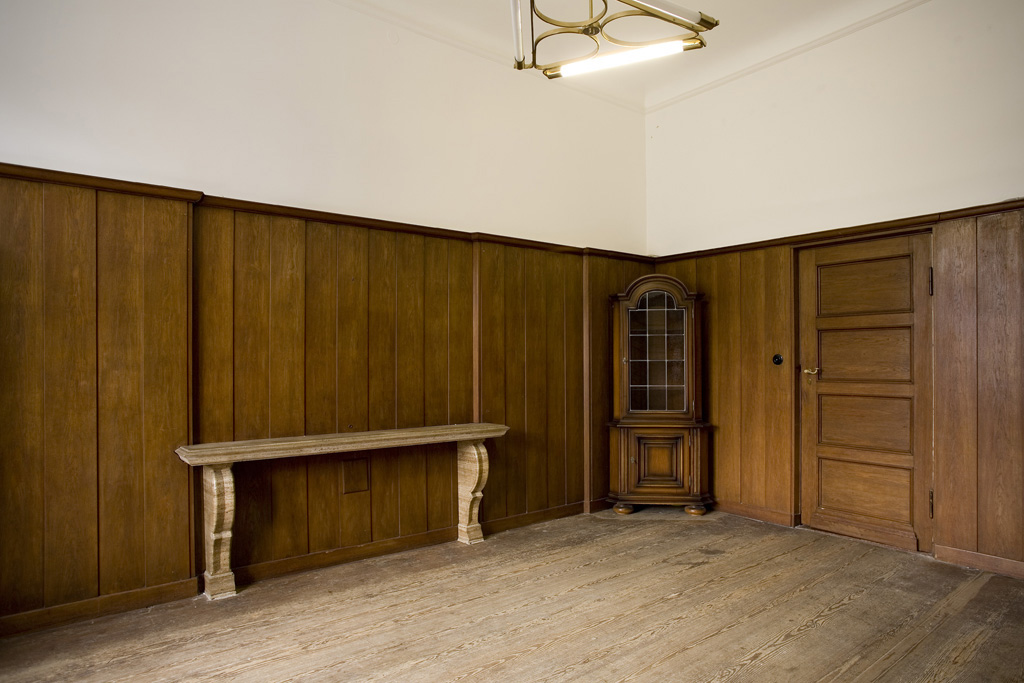
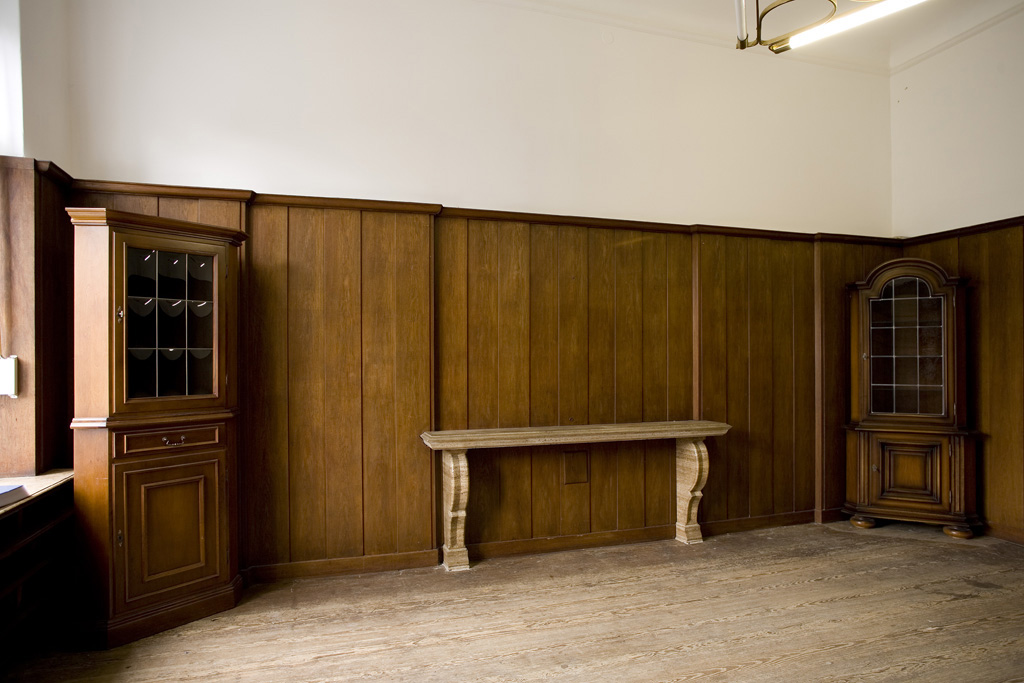
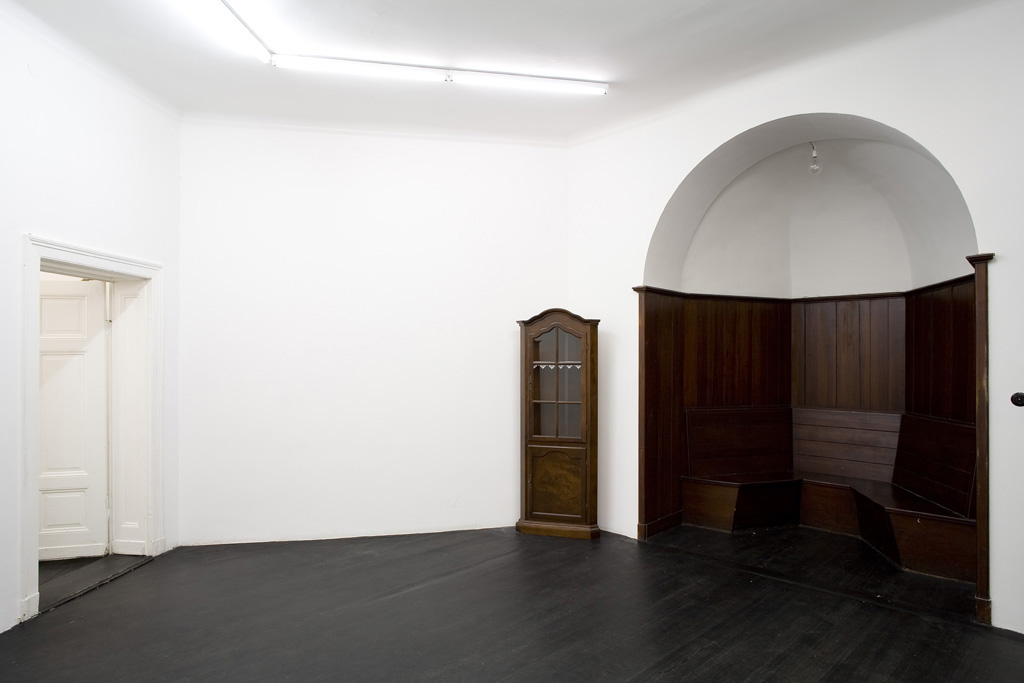
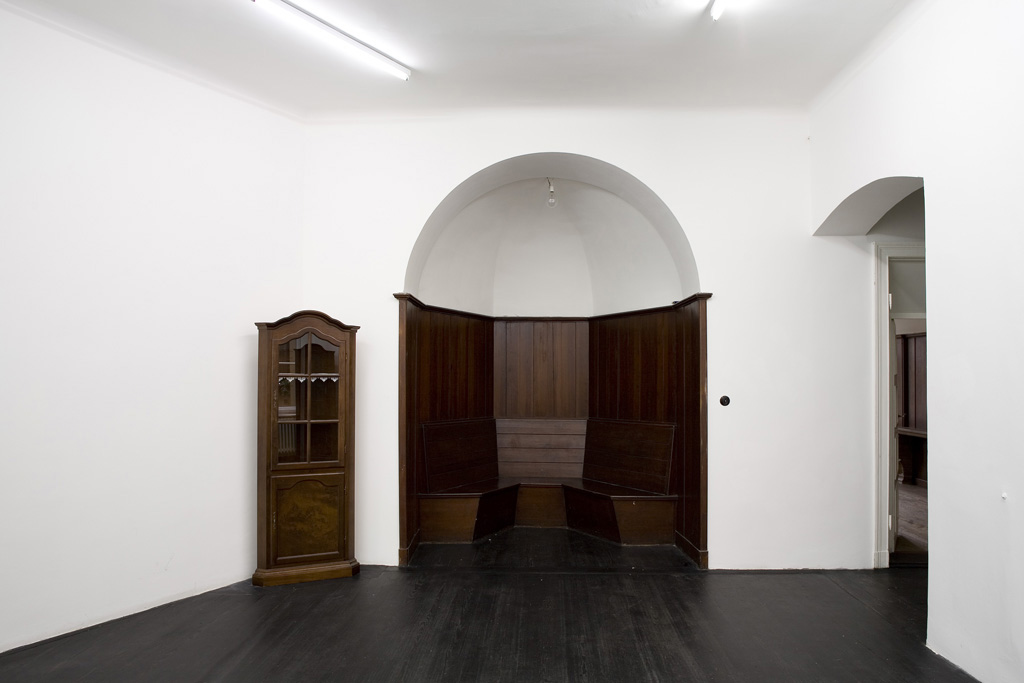
In the otherwise empty Galerie Isabella Bortolozzi, eck-, or corner vitrines stare back at the viewer from every available corner. The vitrines have been gathered from flea markets, second-hand shops and on Ebay. They were mostly picked up from the areas surrounding Berlin and Munich, from small towns such as Moosburg, Durach, Aschau, Beendorf, Rangsdorf, etc. Itʼs the thinness of their veneer that tells their whole story–they are relics, not of the 19th and early 20th century, but of a more recent era, the ʻ60s, ʻ70s and ʻ80s, when they were mass-produced to resemble traditional furniture. Had they been antiques, they may rightly have been treated as heirlooms, handed down from generation to generation, or sold in auctions, but these cheaply made pieces are practically worthless. The large majority of their previous owners were happy to be rid of them.
Second-hand stilmöbel (period furniture) are traces of fallout from a booming consumer society. As leftovers, they are doubly outdated. Their indifference to modern design is as poignant as their imitation of a remote history. Decorative features such as cast fittings and old-fashioned keyholes, finishes meant to suggest hard and exotic wood, and classical inlay all suggest the rustic and pre-modern. In contrast, itʼs the plywood and particleboard backsides that give away where the vitrines belong. The raw sides of the vitrines go against the wall; the front makes them gaudy, but the back slots them into the corner.
Following this convention, the corner is where the vitrines are placed in the gallery. The installation has been done, as far as possible, without personal or aesthetic decisions, and itʼs simply the correspondence of the layout of the gallery to the shape of the vitrines that determines the placement. Where an appropriate corner is formed by the walls, one puts a vitrine. The artists let custom and norm guide their installation. But this aspect of the show is not only tied to the eckvitrines. The installation, with its emphasis on reductiveness and its systematic refusal of individual expression, is linked to Minimal and Conceptual processes from the sixties onward. These processes have frequently been pored over, reused and revised, even fetishized. Compared to the vitrines, they have perhaps aged gently.
The vitrines are superimposed on the already present décor of the gallery. As opposed to the neutrality of more conventional exhibition spaces, the galleryʼs paneled walls and interiors display a distinctive or characteristic taste. In this setting, these eckvitrines are only present as part of the artwork. Although they stand in the corner, they are still imposing.
Contact
T +49—30—26 39 76 20
F +49—30—26 39 76 229
E info(at)bortolozzi.com
Subscribe to our newsletter here →
Schöneberger Ufer 61
10785 Berlin, Germany
Directions
